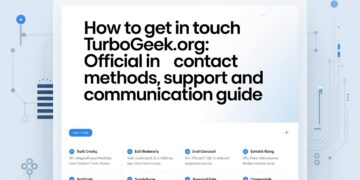Why Cloud Security Matters Today
More people and businesses than ever rely on the cloud for everything from storage and backup to email and day-to-day operations. It’s easy to see why—the cloud removes the restrictions of local devices, making collaboration seamless, regardless of your location in the world. As of 2023, around 60% of all corporate data globally is now stored in the cloud, according to recent research. This figure is expected to rise as both big and small organizations pursue the flexibility and cost savings offered by cloud solutions. However, the cloud’s accessibility also opens new doors to cyber threats, which means everyone—from private users to major enterprises—needs to prioritize safeguarding their online assets.
Cloud security is not the sole responsibility of the provider. While most reputable vendors roll out increasingly advanced firewalls, monitoring, and patch management, the ultimate responsibility for managing risk falls on business leaders and individuals. Choosing comprehensive cloud security solutions is often the first step in establishing a robust defense strategy. Yet, it is ongoing vigilance, awareness of new threats, and implementation of practical security measures that solidify safety. Every database, file, or record placed on the cloud deserves protection, regardless of the organization’s size or the perceived sensitivity of the data.
Common Cloud Threats to Watch For
As organizations become more dependent on the cloud, attackers have adapted rapidly, exploiting technical vulnerabilities and human errors. Ransomware remains one of the most disruptive types of cyberattacks faced today, often freezing data until a hefty payment is made. Meanwhile, data breaches caused by weak authentication, exposed application programming interfaces (APIs), or social engineering can inflict long-term reputational and financial harm. Other risks include account hijacking, malicious insiders, and denial-of-service (DoS) attacks, which can cause significant operational disruption.
As highlighted by the Cybersecurity and Infrastructure Security Agency, many cloud breaches stem from simple mistakes, such as using default passwords or granting excessive privileges to users who do not need them. Even the seemingly harmless act of uploading sensitive data to the wrong cloud folder can have significant consequences if access controls aren’t airtight. In my experience, routine audits and user training are critical for closing off the easy avenues that attackers typically exploit.
Practical Steps to Protect Your Data
- Create strong, unique passwords: Passwords should be at least 12 characters long and include a mix of letters, numbers, and special characters. A password manager helps generate and securely store these, eliminating the guesswork involved in staying secure.
- Enable multi-factor authentication (MFA): MFA requires at least two forms of identification before granting access, making it much harder for attackers to breach accounts, even if passwords are compromised. This could mean a text code, an authenticator app, or a biometric scan.
- Regularly back up data: It is essential to have both cloud-based and offline backups. Offline (air-gapped) backups shield your information from ransomware attackers who may delete or encrypt files in the cloud.
- Update software and cloud services frequently: Unpatched vulnerabilities are a prime target for attackers. Set up automatic updates wherever possible, and don’t overlook devices that connect to your cloud accounts.
- Monitor account and file activity: Many cloud providers offer detailed account logs and real-time alerts. Routinely reviewing these can help quickly detect unauthorized access or changes.
Studies indicate that over three-quarters of cloud breaches are linked to weak password hygiene or neglected updates. Dedicating a few minutes each month to review and strengthen your security posture pays off by drastically reducing your chances of falling victim to common attacks.
Understanding Identity and Access Management (IAM)
Identity and Access Management (IAM) systems are a critical foundation for maintaining secure operations in cloud environments. These systems enable organizations to control and monitor who has access to digital resources and what level of interaction each user is permitted. Permissions can be finely tuned to control actions such as viewing, editing, downloading, or deleting specific types of files and even setting restrictions based on time, device, or location. For example, an accountant may have access to financial documents during business hours but be restricted from accessing system settings or employee records. This role-based access minimizes unnecessary exposure and enhances overall security, particularly in the event of a breach.
Modern IAM solutions incorporate automation to enhance protection, automatically triggering password resets in response to suspicious behavior or revoking access for employees who exit the organization. These systems also log user actions, flag policy violations, and generate detailed reports, offering clear visibility for compliance and auditing purposes. For businesses managing numerous users or sensitive data, IAM streamlines security administration and significantly reduces the risk of unauthorized access, making it an essential component of a comprehensive cybersecurity strategy.
How Encryption Shields Your Information
Encryption is the engine that powers secure cloud services. When data is encrypted, it gets scrambled into unreadable code, which is impossible to interpret without the correct decryption key. This means that even if an attacker intercepts the data—whether in transit between devices or resting on servers—they can do nothing with it unless they have that key. End-to-end encryption is ideal, as it ensures data remains encrypted from the moment it leaves your device until an authorized party accesses it.
Regulatory frameworks such as GDPR and HIPAA require organizations to safeguard sensitive data with robust encryption. Always confirm that your cloud provider uses strong encryption protocols by default and independently encrypts your most confidential files for an added layer of confidence. This two-pronged approach, which relies on provider encryption and applies your own, is now considered best practice in environments handling especially valuable or regulated data.
The Value of Employee Training in Security
Security extends beyond technology—it fundamentally revolves around human behavior. While tools like firewalls and antivirus software are essential, statistics reveal that approximately 82% of data breaches involve human error. This includes mistakenly clicking on malicious links, misconfiguring systems, or inadvertently sharing sensitive data. Because of this, regular and meaningful employee training is one of the most effective strategies an organization can implement.
Security awareness should be a continuous process rather than a single annual seminar. Forward-thinking organizations now incorporate recurring programs like monthly security briefings, quarterly phishing simulations, and role-specific training modules, such as secure coding practices for developers. These sessions educate and reinforce awareness in a rapidly evolving threat landscape. Fostering a culture of open communication is equally vital—employees should feel safe reporting suspicious activities without fear of judgment or reprimand.
Over time, these habits take root. A well-informed team becomes an organization’s first line of defense, often detecting and neutralizing risks before they cause damage. By prioritizing training and trust, businesses build a resilient security culture where people become assets, not liabilities.
How to Respond When Security Fails
Even with world-class defenses, no system is entirely immune to attack. A fast, organized response is what separates minor setbacks from devastating crises. Developing a detailed incident response plan ensures your team knows exactly what to do—who needs to be notified, what data needs to be contained, and how to communicate with the public and authorities.
- Find and contain the breach: When a compromise is suspected, isolate the affected resources. This may involve freezing cloud accounts, turning off shared folders, or taking devices offline until the threat is neutralized.
- Alert the right people: Transparency is vital. Anyone whose data may have been exposed—clients, partners, and regulators—should be informed promptly, as required by law and ethics.
- Conduct post-incident analysis: After resolving the crisis, gather details on how the breach occurred. Update your security strategies and policies to address identified weaknesses, and share lessons learned with the entire team to prevent similar incidents in the future.
Rapid, transparent responses minimize losses and demonstrate accountability—qualities that maintain trust with customers and stakeholders even after an incident.
Looking Ahead: Trends in Cloud Security
Artificial intelligence (AI) and machine learning (ML) are rapidly transforming the cloud security landscape, enabling organizations to detect and respond to threats in real time. These technologies analyze vast volumes of data to identify irregular patterns, such as unauthorized access attempts or unexpected system behavior, often before a human would notice what previously required hours of manual investigation can now trigger automated defensive actions within milliseconds, dramatically reducing the window of opportunity for ransomware, phishing, or brute-force attacks to cause harm.
As cybersecurity regulations become increasingly stringent—especially regarding data privacy, breach reporting, and user protection—companies are shifting their security strategies to prioritize intelligent automation. This includes integrating adaptive analytics, advanced encryption protocols, and behavior-based user authentication into their cloud infrastructures. Industry reports indicate that organizations embracing AI-driven security frameworks experience fewer major incidents and quicker recovery times.
However, technology alone is not enough. Human oversight remains essential. Businesses must continue investing in staff training, simulated response exercises, and clear protocols. The most effective defenses pair cutting-edge AI with a culture of preparedness, ensuring digital systems and human teams can adapt to evolving threats.
Do Read: ArcyArt Blog – A Creative Hub for Artists & Enthusiasts


















